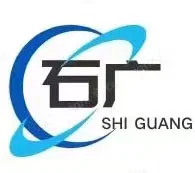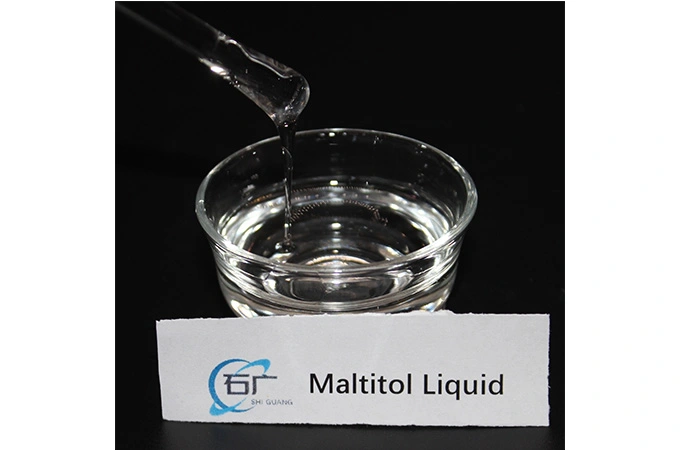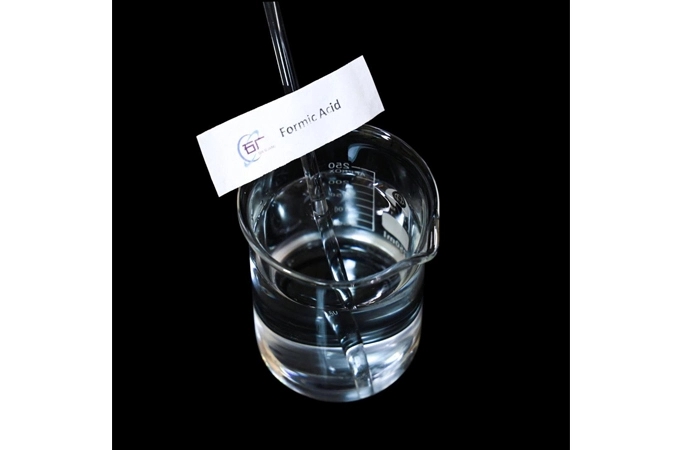1. Market Size and Growth Trend
According to a report by Huanyang Market Research, it is estimated that the global output value of sodium dodecyl ether sulfate (SLES) will reach 1,526.3 million US dollars by 2029, with a compound annual growth rate (CAGR) of 4.8% during the period from 2023 to 2029. This data intuitively reflects that the SLES market will maintain a stable growth trend in the coming years, demonstrating its strong market potential and development vitality. From the perspective of regional markets, the Asia-Pacific region is currently the largest consumer market for SLES, accounting for a significant proportion of the global market share. This is mainly attributed to the huge population base and rapidly developing economy in the Asia-Pacific region, which has driven the vigorous development of related industries such as detergents and personal care products.
Take the Chinese market as an example. With the continuous improvement of residents' living standards, the demand for cleaning and personal care products is increasing day by day. In recent years, the market size of laundry detergent in China has continued to expand, and the annual growth rate has remained at a relatively high level. As an important raw material for laundry detergent, the market demand for SLES has also risen accordingly. Meanwhile, emerging market countries such as India, due to their large populations and rapid economic development, have a constantly rising demand for SLES, becoming an important force driving the growth of the SLES market in the Asia-Pacific region.
Although the market size in Europe and North America is relatively stable, due to the high demands of consumers for product quality and environmental protection, the demand for high-quality and environmentally friendly SLES products is also continuously increasing, which also provides certain support for the growth of the SLES market.
2. Market Drivers
(1) Wide range of application fields
In the field of detergents and cleaning agents: SLES has excellent decontamination, emulsifying and foaming properties, and is a key raw material for detergent products such as laundry liquid, dishwashing liquid and laundry powder. In the laundry detergent market, as consumers' demands for the cleaning effect of clothes and the convenience of use continue to rise, the market share of laundry detergent has gradually expanded, and the demand for SLES has also increased accordingly. For instance, a well-known laundry detergent brand has launched a high-end series of products. By optimizing the formula and increasing the proportion of SLES usage, the product's decontamination ability and foam richness have been enhanced, which has received wide acclaim from consumers and its sales have continued to grow.
In the field of personal care products: SLES is widely used as a surfactant in personal care products such as shampoo, body wash and facial cleanser. It can not only produce rich foam, effectively clean the skin and hair, but also has the advantage of being less irritating to the skin. With the continuous development of the personal care market and the increasing demand of consumers for high-quality and diverse personal care products, a broad space for development has been provided for the SLES market.Take the shampoo market as an example.
Consumers' demands for shampoo are no longer limited to its cleaning function; they also pay more attention to the care and maintenance of their hair. Many shampoo brands have launched products with functions such as nourishing, repairing and preventing hair loss. As a basic surfactant, SLES can be well compatible with various functional ingredients, providing a guarantee for the performance of the products. For instance, a certain brand's anti-hair loss shampoo, by adding various plant extracts and surfactants such as SLES, not only effectively cleans the scalp but also nourishes hair follicles and promotes hair growth, thus gaining popularity among consumers.
(2) Demands for environmental protection and sustainable development.
Against the backdrop of the increasing global emphasis on environmental protection, the excellent biodegradability of SLES makes it an ideal surfactant that meets environmental protection requirements. With the continuous improvement of environmental protection regulations and the enhancement of consumers' environmental awareness, enterprises' demand for environmentally friendly raw materials is increasing day by day. Many countries and regions have introduced relevant regulations to restrict or prohibit the use of surfactants that are harmful to the environment and encourage enterprises to use products with good biodegradability.
For instance, the "Detergent Regulation" issued by the European Union has set clear requirements for the biodegradability of surfactants in detergents. Products that do not meet the standards will be prohibited from sale. This has prompted enterprises to increase the use of environmentally friendly surfactants such as SLES to meet regulatory requirements. Meanwhile, consumers' preference for environmentally friendly products is gradually increasing, and they are more willing to purchase detergents and personal care products that use eco-friendly raw materials. In order to meet consumer demands and enhance brand image, enterprises have also adopted environmentally friendly surfactants such as SLES one after another, which has provided a strong impetus for the development of the SLES market.
In addition, some internationally renowned brands are also actively promoting sustainable development strategies, integrating environmental protection concepts throughout the entire process of product research and development, production and sales. For instance, an international cosmetics brand has promised to replace all surfactants in its products with environmentally friendly raw materials such as biodegradable SLES within the next few years. This will further expand the market demand for SLES.
(3) Growth of Emerging Markets
With the rapid development of emerging economies, the income level of residents has significantly increased, their consumption capacity has continuously strengthened, and the demand for detergents, personal care products, etc. has also shown an upward trend. For instance, the market size in regions such as Asia and South America has gradually expanded, becoming a new source of growth momentum for the SLES market.
In Asia, apart from populous countries like China and India, the economies of Southeast Asian countries such as Indonesia and Vietnam are also developing rapidly. With the acceleration of urbanization and the improvement of residents' living standards, the demand for detergents and personal care products in these countries is constantly increasing. Take Indonesia as an example. In recent years, the scale of its detergent market has grown at a double-digit rate annually, and the demand for SLES has also increased significantly accordingly.
In South America, the economic development of countries such as Brazil and Argentina is relatively rapid. Consumers' pursuit of a high-quality life has continuously upgraded their demand for personal care products. Meanwhile, the agriculture and industry in these countries are constantly developing, and the demand for products such as industrial cleaners is also increasing. All these provide a broad space for the development of the SLES market.
In addition, the economy of the African region is also gradually rising. With the growth of population and the improvement of living standards, the demand for detergents and personal care products is also gradually increasing, which is expected to become a new growth point in the SLES market.
3. Challenges Faced by the Market
(1) Fluctuations in raw material prices
The production of SLES mainly uses fatty alcohols and other raw materials, and the prices of these raw materials are greatly affected by factors such as international market supply and demand and crude oil prices, fluctuating frequently. The price of crude oil is an important factor influencing the price of fatty alcohols, as fatty alcohols are mainly produced from petrochemical raw materials. When the international crude oil price rises, the production cost of fatty alcohols will also increase accordingly, thereby leading to an increase in the production cost of SLES.
For instance, during periods when international crude oil prices fluctuate significantly, the production costs of SLES producers also fluctuate greatly accordingly. A certain SLES production enterprise once saw its raw material procurement cost increase by 30% due to the sudden rise in crude oil prices, which severely affected the enterprise's profits. To deal with the risks brought by the fluctuations in raw material prices, enterprises have to take a variety of measures, such as signing long-term contracts with suppliers, optimizing procurement strategies, and strengthening inventory management. However, these measures cannot completely eliminate the impact of price fluctuations.
In addition, the supply and demand relationship in the raw material market will also have an impact on prices. When the supply of raw materials such as fatty alcohols in the market is tight, prices tend to rise. When there is an oversupply, prices will fall. The changes in this supply and demand relationship are difficult to predict accurately, which brings great uncertainty to the production and operation of SLES manufacturing enterprises.
(2) The market competition is fierce
The competition in the SLES market is extremely fierce. There are numerous production enterprises worldwide, including internationally renowned large-scale chemical enterprises as well as many small and medium-sized producers. International large-scale chemical enterprises such as BASF and Dow Chemical have occupied a considerable share in the market by virtue of their strong technical strength, brand advantages and economies of scale. These enterprises possess advanced production technologies and R&D capabilities, and are able to continuously launch high-quality and high-performance SLES products to meet the needs of different customers.
While numerous small and medium-sized producers mainly compete for market share through price advantages. Because the production costs of small and medium-sized producers are relatively low, they can sell products at lower prices, which has had a certain impact on the market share of large enterprises. For instance, in the markets of some developing countries, SLES products produced by small and medium-sized producers have gained popularity among some customers due to their lower prices, resulting in a decline in the market share of large enterprises.
Fierce market competition is prone to trigger price wars, leading to a decline in product prices and squeezing the profit margins of enterprises. Meanwhile, it also prompts enterprises to continuously improve product quality, increase investment in research and development, and launch new products to enhance their own market competitiveness. In order to stand out in the market competition, enterprises need to constantly innovate and develop products with differentiated competitive advantages. For instance, some enterprises have developed new SLES products to enhance their performance and environmental friendliness, in order to meet customers' demands for high-quality products.
4. Conclusion
To sum up, the market prospect of sodium dodecyl ether sulfate is broad, but it also faces many challenges. The steady growth of the market is attributed to its wide range of application fields, the development trend of environmental protection and the rise of emerging markets. However, fluctuations in raw material prices and fierce market competition have also brought certain pressure to enterprises. For enterprises, only by constantly adapting to market changes, strengthening technological innovation and product research and development can they occupy a favorable position in the market environment where opportunities and challenges coexist and achieve sustainable development.
In the future development, enterprises can increase their investment in research and development, and develop more environmentally friendly and high-performance SLES products to meet the market demand for high-quality products. Meanwhile, enterprises can also enhance cooperation with suppliers and customers, establish a stable supply chain system, and reduce the risks brought about by fluctuations in raw material prices. In addition, enterprises can also enhance their market competitiveness and achieve sustainable development by expanding into emerging markets and optimizing their product structures. With the continuous development of the market and the continuous progress of technology, the SLES market is expected to embrace a broader space for development.
 English
English Nederland
Nederland


